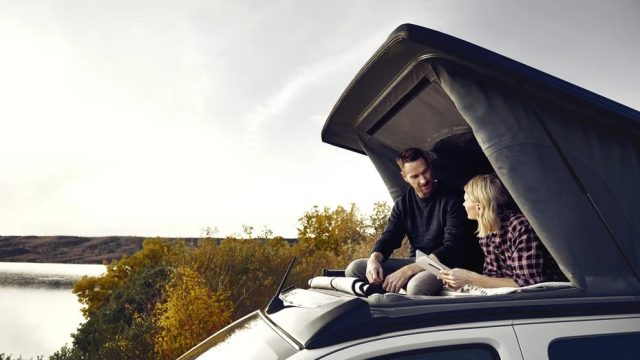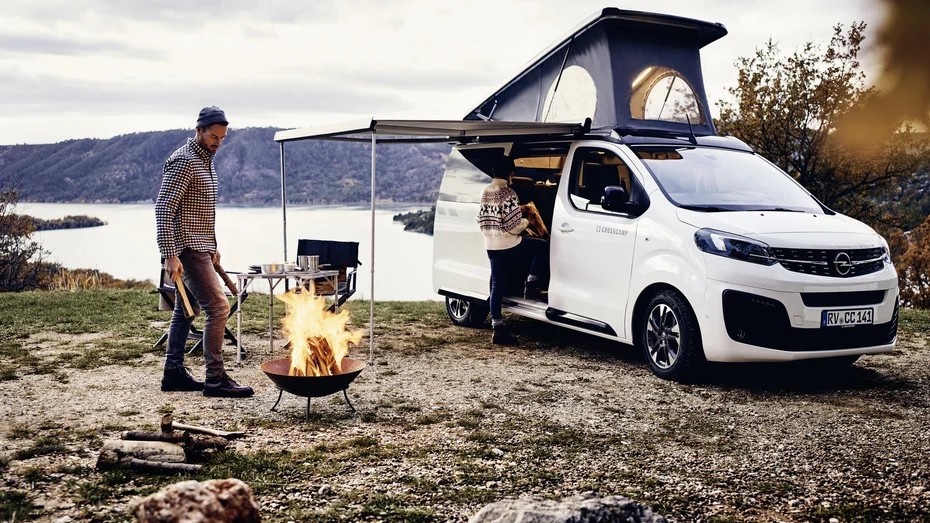It used to be that travelers sought WiFi while on the road when cellular and mobile technology was in its infancy. We needed to tap into the World Wide Web to check emails, research the route ahead, upload to social media, and ensure that the wheels did not fall off in the real world. Once we managed to find the elusive internet connection, we would spend half the day catching up.
How long ago that all seems now that we all have a high-speed internet connection almost everywhere, and within the next few years, we will have to make a concerted effort to escape the internet. Electricity is the new WiFi. Love it or not, the reality is that electric vehicles are becoming what the smartphone used to be, and there will likely be a time in the not too distant future when you might wonder how we ever lived and traveled without independence from fossil fuels (yes, we know how electricity is generated). Seeking a reliable power source to recharge your EV camper will be the equivalent of us old timers searching for a few bars of internet; driving your vehicle a few hundred miles will have much less direct day-to-day impact on your wallet and, as we all know, finding electricity is hardly ever a real challenge, and with EV infrastructure expanding rapidly, a convenient power hookup will soon be the least of our problems.

The Opel Zafira-e Life Crosscamp Flex is being marketed as an “urban camper,” and, for someone who has spent a fair amount of time exploring Europe by vehicle, it makes perfect sense. From a traveling businessman and designer like Nils Holger Moormann (check out his designs and VW camper here) to vanlifers and even overlanders looking for a long-distance challenge, the EV urban camper offers so much more than just a commute. Crosscamp is based in Isny im Allgäu, a small town in Germany, a stone’s throw from the Bodensee and neighbors Switzerland, Austria, and Lichtenstein, an area rich with a history of design, innovation, and a love of the great outdoors.

The electrically powered Crosscamp Flex presented at the Caravan Salon 2022, which should be available by early to mid-2023, is a prototype based on an Opel Zafira-e Life with a 75-kilowatt battery. An additional 95-amp-hour auxiliary “house” battery powers the onboard accessories, including the lights, fridge, and USB socket for charging smartphones, cameras, and other electronic devices. The Zafira offers a front-mounted electric motor producing 134 horsepower (100-kilowatt / 136 horsepower) and 260-newton meters (192 pound-feet) of torque, and the range is a claimed 200 miles on a single charge. It is further claimed that when using a 100-kilowatt DC fast charger, the battery can charge up to 80 percent in 50 minutes, enough time to make lunch, catch up on emails, or indulge in a nap.

The Crosscamp Flex is intended to appeal to those who want an electrically powered van for work or family but also appreciate the freedom of camping trips and spontaneous leisure adventures. With very little effort, the vehicle can switch from an everyday work or family car to a camper, retaining seat capability while offering removable “furniture,” i.e., the kitchen unit.
“The number of registrations for vehicles with battery-electric drives is constantly increasing. Vehicle manufacturers are currently not only significantly expanding their range of electric vehicles in the passenger car segment but also vans. At the same time, the acceptance of electric drives is growing with the expansion of the infrastructure. With the electrically powered Crosscamp Flex, we want to pick up on this trend and, as a specialist for urban campers suitable for everyday use, build a bridge from the car segment to the motor home sector.”
according to Christof Häßler, head of the urban camper division at Dethleffs.
In other words, everyone is doing the electric boogie, and now is the time to dance.

The Crosscamp Flex is designed to focus on everyday use, and the exterior dimensions are suitable for (European) city use, underground parking, and essentially, wherever a medium-sized delivery van can go, the Zafira-based camper can go. This makes a lot of sense not only for traveling the cities and urban areas of Europe but also for culture vultures who explore cities globally by vehicle. Naturally, the Crosscamp Flex is not limited to the concrete jungle and is perfectly suited to the outdoor lifestyle of surfers, hikers, mountain bikers, or festival goers who are tired of sleeping in a soggy ground tent. The versatile interior is designed for up to four passengers and boasts all the features you would expect from a modern camper vehicle.

The Crosscamp Flex Zafira-e Life features a kitchen unit connected to gray and freshwater tanks, front seats that can be rotated 180 degrees, a pop-up roof with a bed to sleep two adults, and practical side storage cupboards in the rear. The pop top combined with a foldable sleeping bench (which can seat three adults) provides comfortable sleeping for four.
“The prototype of the electrically powered Crosscamp Flex … marks only the first step towards more e-mobility in the motor home segment. We plan to mass-produce the Crosscamp Flex Zafira-e Life as early as the first half of 2023. We also want to offer the urban electric camper as a Crosscamp Lite. Of course, all Crosscamp models are still available with diesel engines.”
says Christof Häßler.

Crosscamp vehicles are developed, produced, and sold by Dethleffs, Isny/Allgäu, a division of the Erwin Hymer Group, a 100 percent subsidiary of Thor Industries, one of the world’s leading manufacturers of leisure vehicles with over 31,000 employees.
While pricing for the Crosscamp Flex EV has not been confirmed, it has been speculated in the media that the vehicle will be launched to the European market at around $46,000.
Our No Compromise Clause: We carefully screen all contributors to ensure they are independent and impartial. We never have and never will accept advertorial, and we do not allow advertising to influence our product or destination reviews.


